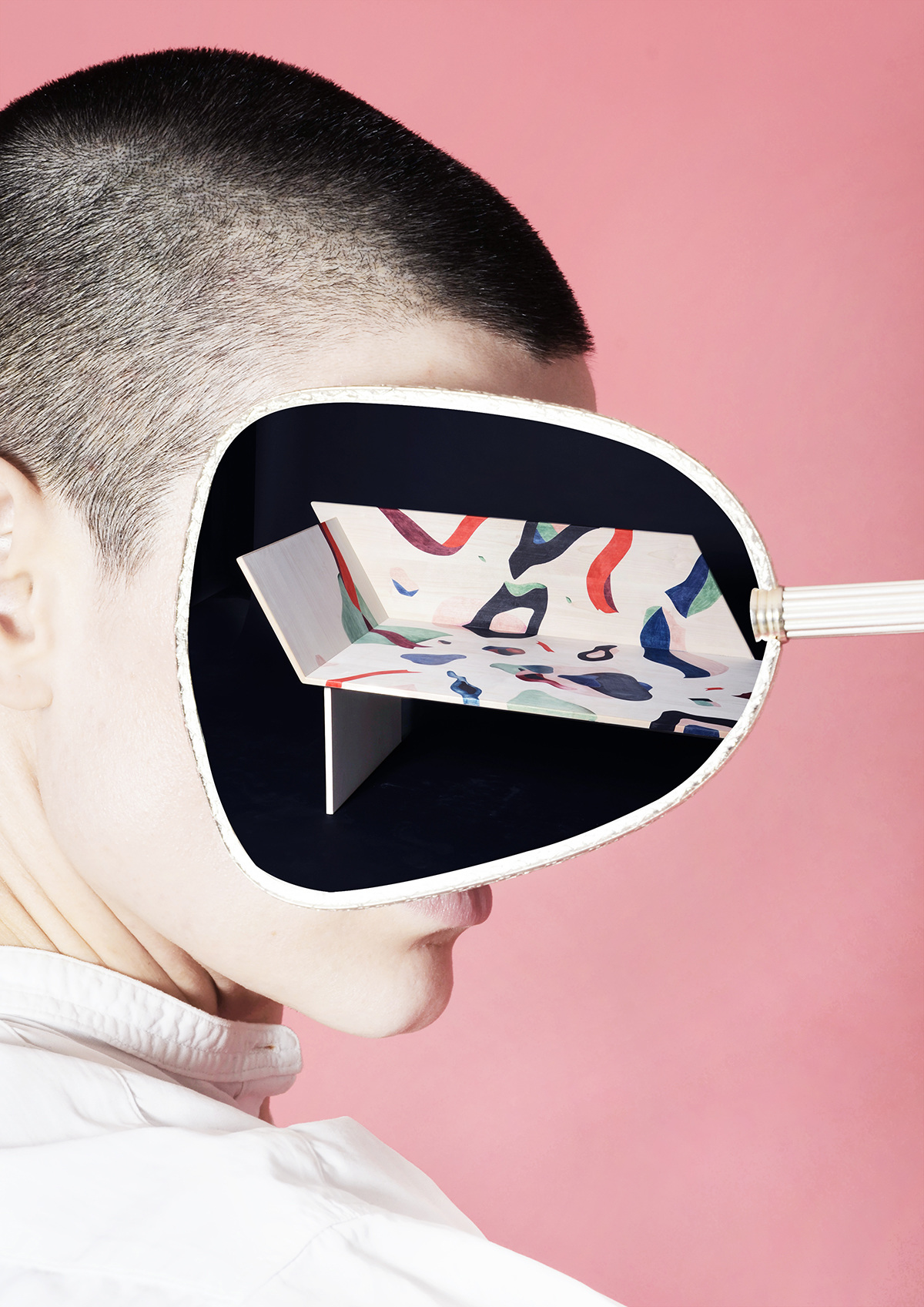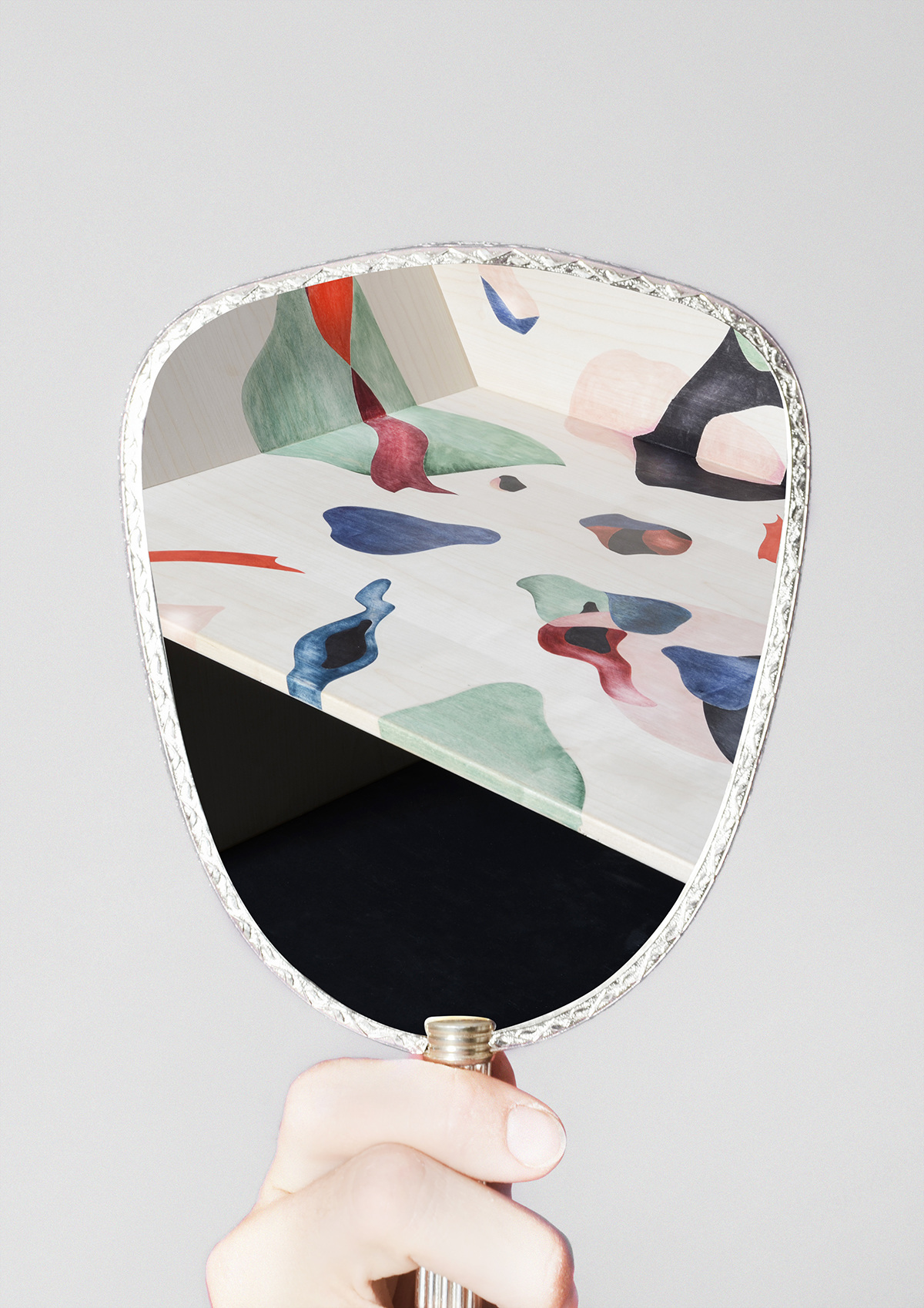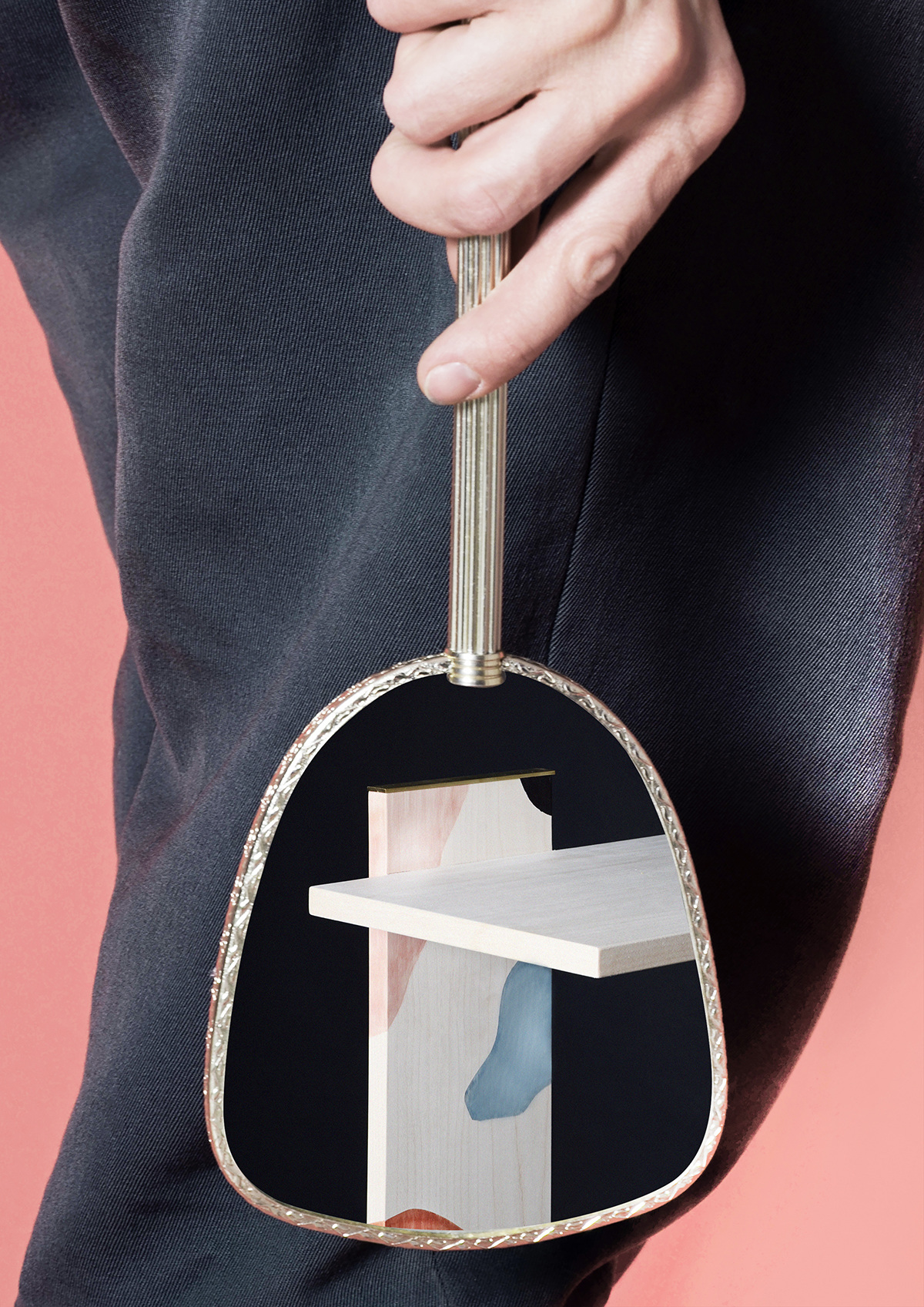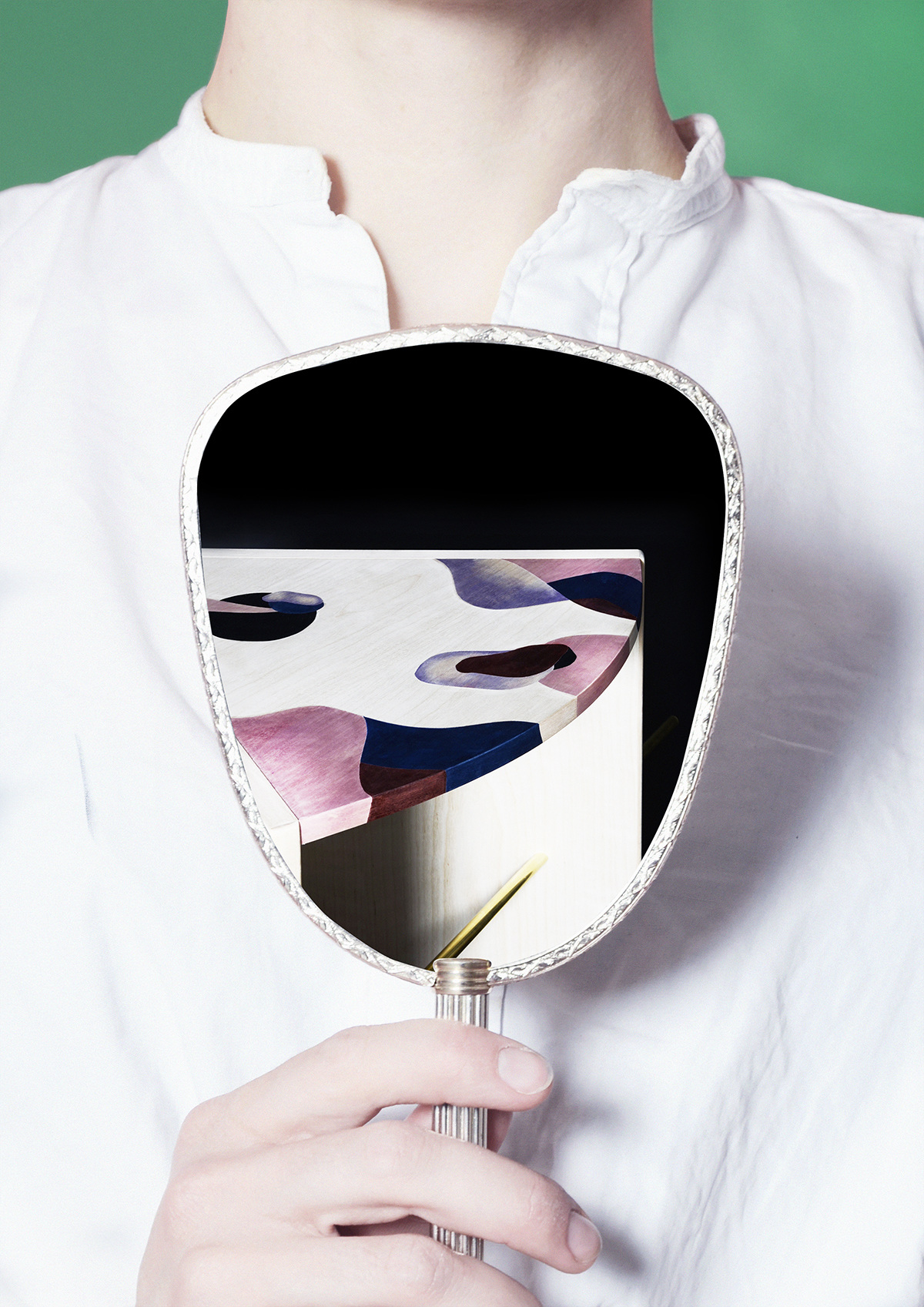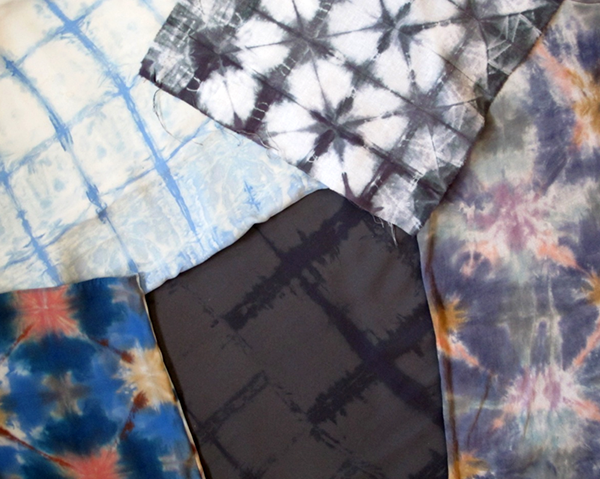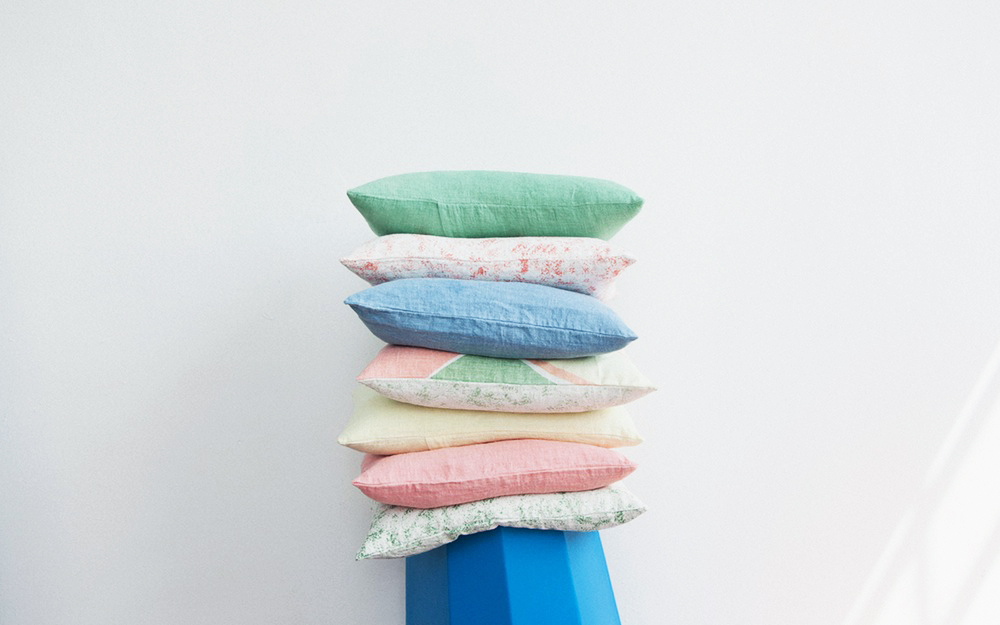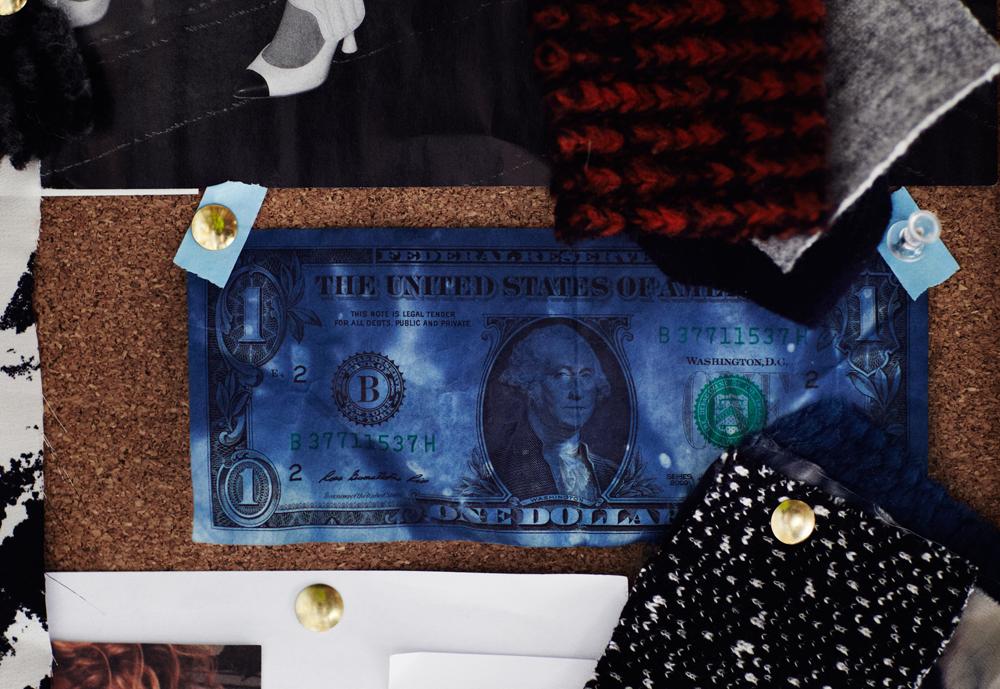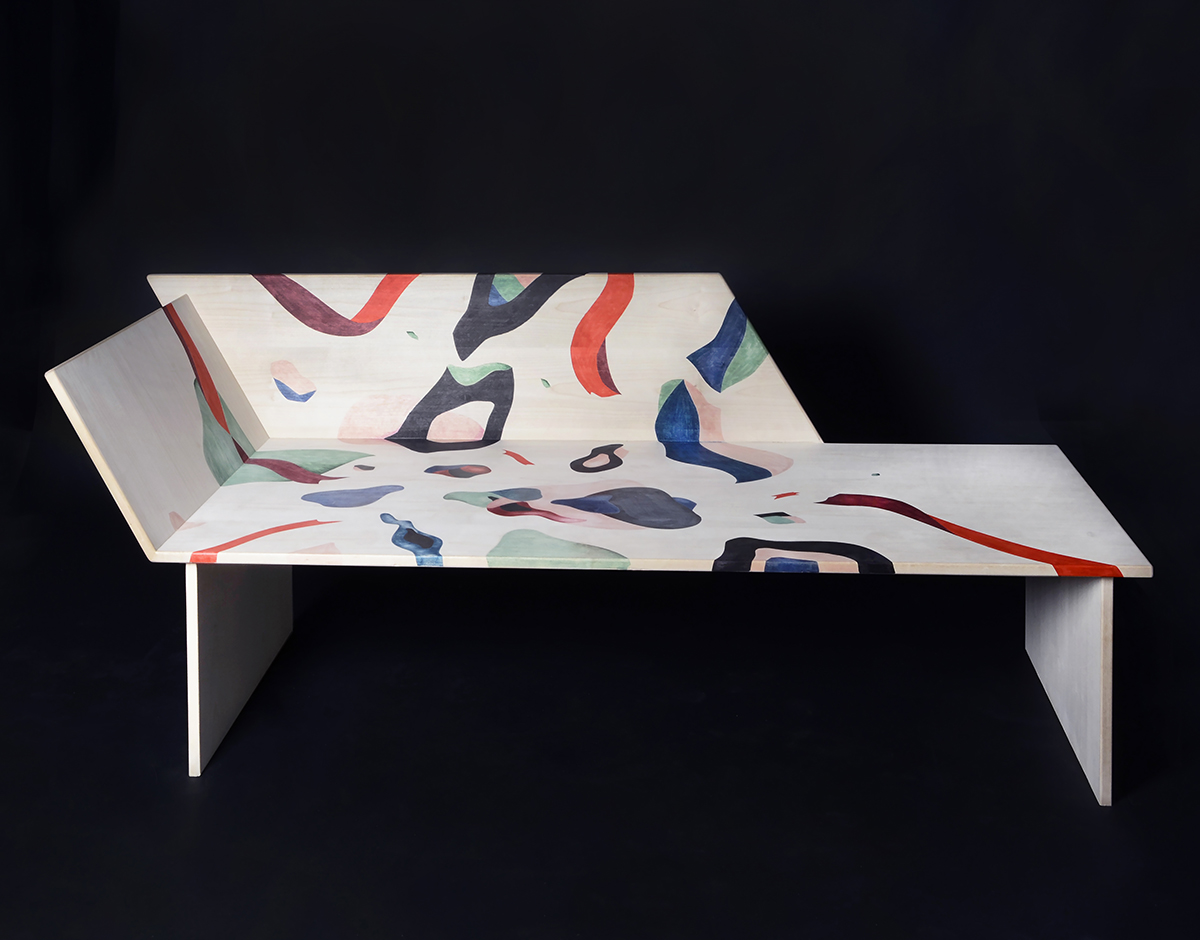
06.02.16
Up and Coming
Our First Discovery From This Year’s Design Grads: Vera Panichewskaja
PHOTOS BY LINA FORSGREN
When Vera Panichewskaja was a two-year-old living in Belarus, she would tag along to the art classes her mother taught at a local school, on a Russian marquetry technique that involved boiling straw in dye and inlaying it into wooden surfaces to create geometric drawings. A year later, her family moved to Sweden, where she fell in love with the 18th-century painted-wood houses she saw in the northern region of Härjedalen. For her recent graduation project at the Beckmans College of Design, Panichewskaja attempted to connect the dots between those two formative influences with her Salominka series, which celebrates not only the decorative impulses of her native and adopted homelands, but also the way they “embellish the materials they have access to, contrast the simple and spontaneous with the exclusive and time-consuming, and blur the line between the two- and three-dimensional.” We asked her to tell us more about the project below.
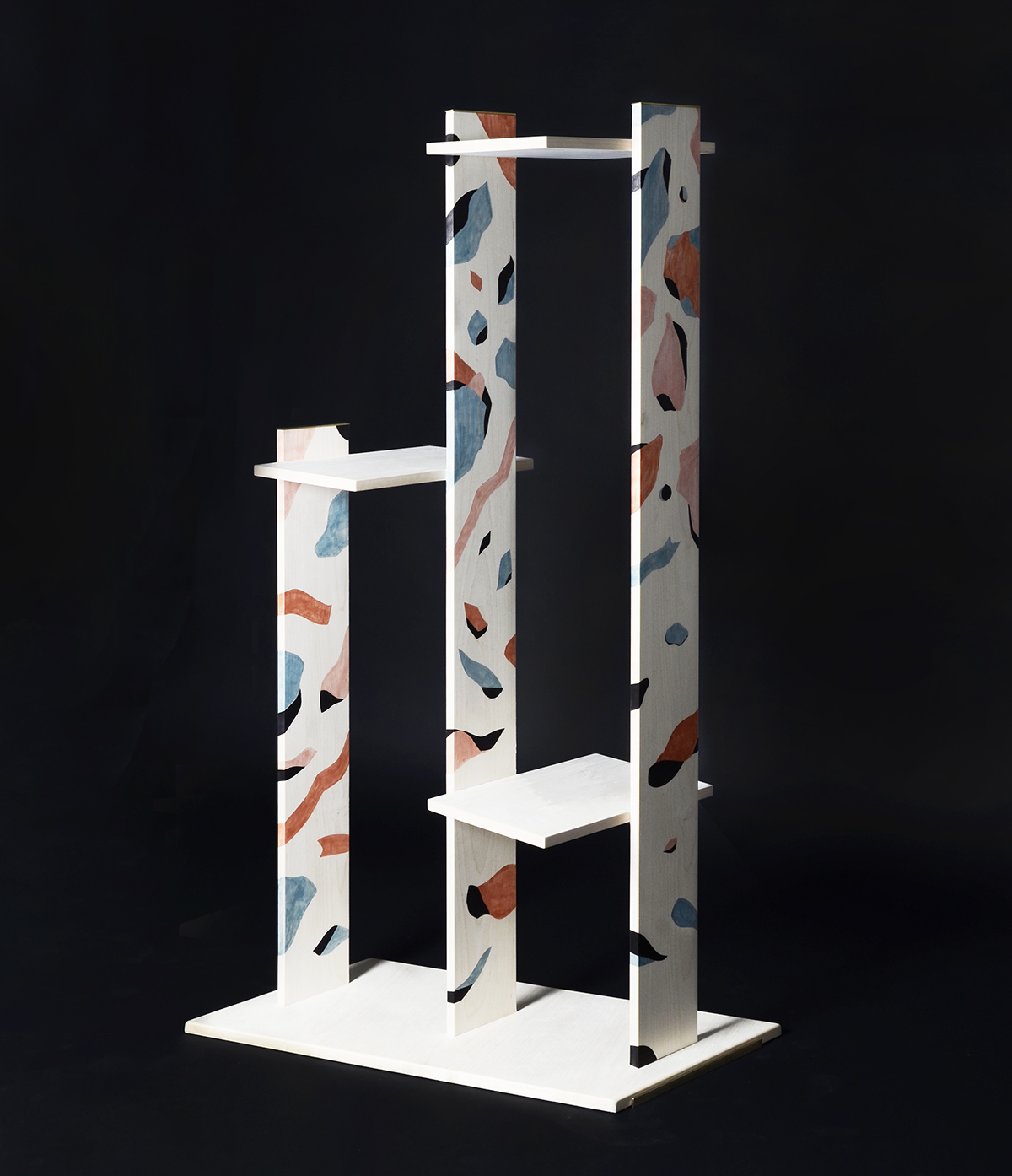 “Salominka is my first furniture collection, consisting of a daybed, a shelf, and a side table that explore color, form, composition, and spatiality,” she told Sight Unseen. “Salominka is the Belarusian word for a piece of straw. Russian straw marquetry, like my mother taught, is a technique that takes a lot of time and patience. To get the dye to become one with the material, you need to boil the straw in the dye, then the straw needs to be ironed, then it can be cut in different shapes to create patterns. The prepared straw has a shine in its surface that makes it look a bit holographic and transparent. The colors interact with the straw, but without covering it like a coating.
“Salominka is my first furniture collection, consisting of a daybed, a shelf, and a side table that explore color, form, composition, and spatiality,” she told Sight Unseen. “Salominka is the Belarusian word for a piece of straw. Russian straw marquetry, like my mother taught, is a technique that takes a lot of time and patience. To get the dye to become one with the material, you need to boil the straw in the dye, then the straw needs to be ironed, then it can be cut in different shapes to create patterns. The prepared straw has a shine in its surface that makes it look a bit holographic and transparent. The colors interact with the straw, but without covering it like a coating.
“For my pieces, I also explored how colors can interact with a material and become one with it. I used birch-veneered MDF that I cut, scraped and dyed in a type of color that stays bright but really lets the material shine through. Cuts in the birch prevent the colors from mixing with each other when I don’t want them to. After applying the color, I scrape and scrape to get the right gradient in my illustrations. The last thing I do is I treat the birch with hard wax oil, which gives it a similar holographic look to the straw inlay. You can say that I’ve enlarged the geometric forms in the straw inlay into the construction of the furniture, then intuitively created the patterns and the colors.”
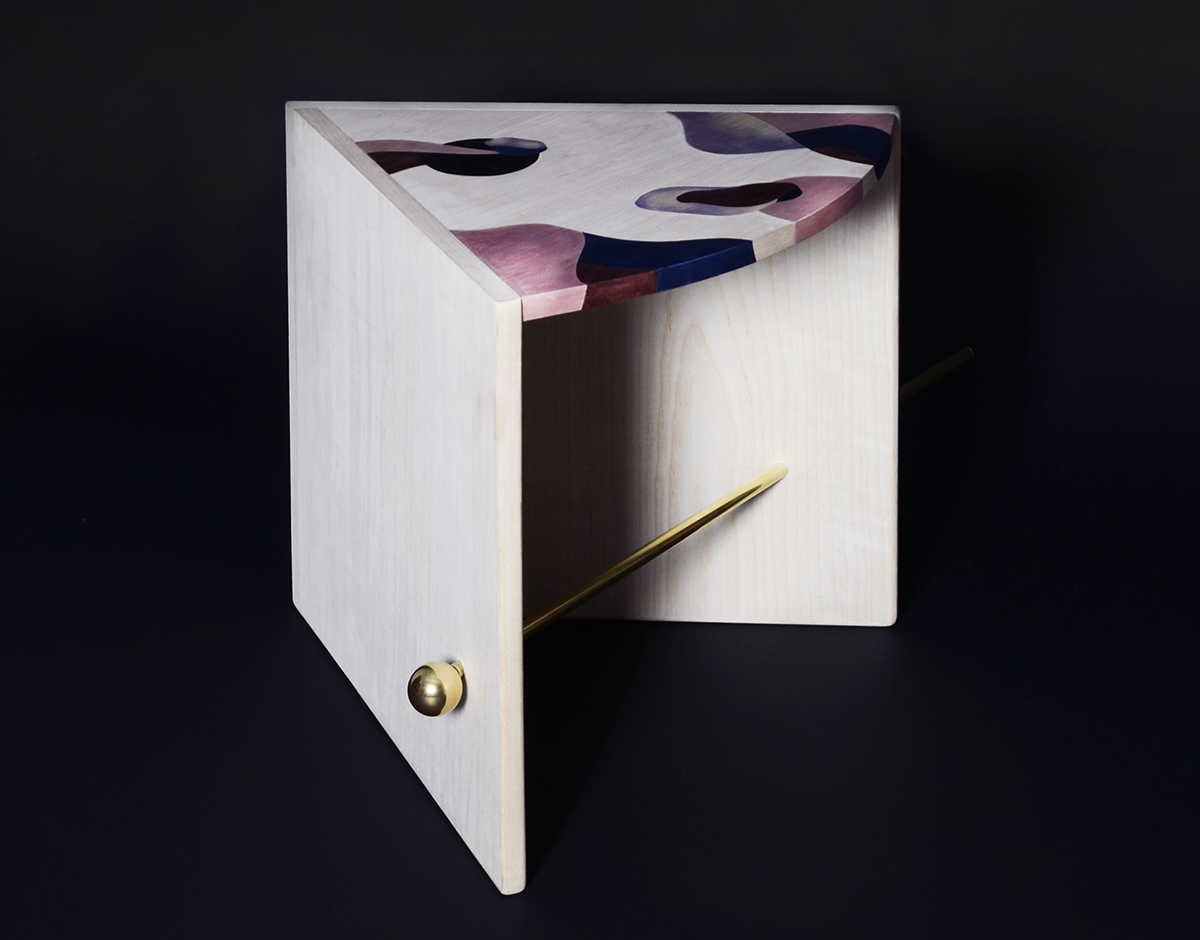 “The Salominka project was also inspired by Russian/Belarusian folklore, Art Deco and late ’70s/early ’80s interiors, and Swedish 18th century houses from Härjedalen. I’ve never lived in Härjedalen, but I’ve been there for the past few summers. It’s a beautiful region in Northern Sweden that has a lot of sun-bleached timber houses, made because of the lack of other materials than the ones that could be found in the woods. The oldest ones I’ve seen are from the 16th century, but during the 18th century the Rococo came to the region, which was mostly a place for farmers, and a specific style emerged that came to be called ‘Farmers’ Rococo.’ Some of the houses were decorated with bright colors of red, green, blue, and yellow. The most beautiful thing that struck me was that the surfaces weren’t treated or sanded before they were adorned, so you can clearly see the rough timber surface underneath the colors. A specific house from the 18th century also caught my attention, which had carved, almost two-dimensional pillars by the entrance.
“The Salominka project was also inspired by Russian/Belarusian folklore, Art Deco and late ’70s/early ’80s interiors, and Swedish 18th century houses from Härjedalen. I’ve never lived in Härjedalen, but I’ve been there for the past few summers. It’s a beautiful region in Northern Sweden that has a lot of sun-bleached timber houses, made because of the lack of other materials than the ones that could be found in the woods. The oldest ones I’ve seen are from the 16th century, but during the 18th century the Rococo came to the region, which was mostly a place for farmers, and a specific style emerged that came to be called ‘Farmers’ Rococo.’ Some of the houses were decorated with bright colors of red, green, blue, and yellow. The most beautiful thing that struck me was that the surfaces weren’t treated or sanded before they were adorned, so you can clearly see the rough timber surface underneath the colors. A specific house from the 18th century also caught my attention, which had carved, almost two-dimensional pillars by the entrance.
“In both instances, you have people taking the materials they have and adding colors and shapes; in response, I’ve taken birch-veneered MDF and created a bridge between the two- and three-dimensional with illustrated surfaces. I’ve worked with the parallelogram in every object — the seat back of the daybed, the bottom of the shelf, and a more deconstructed three-dimensional take on it with the table — and have let it become a recurring form that has a connection to how the straw is cut in tiny diagonal pieces. I’ve over-dimensioned it, and then given the care and time for the decoration to become the main thing.
The project as a whole is an interpretation of my Belarusian cultural heritage and an aim to preserve, interpret, and develop historical craft techniques, letting them meet the modern world and unifying them with my personal aesthetic touch.”
